Mikoyan-Gurevich MiG-23: The Most-Produced Variable-Sweep Wing Aircraft in History
The Mikoyan-Gurevich MiG-23 “Flogger” is a variable-geometry fighter aircraft designed for the Soviet Union in the 1960s. It was introduced in the 1970s, with 5,047 units built, making it the most produced variable-sweep wing aircraft in history. This fighter’s unique design shows the differences between Soviet and American aircraft during the Cold War era.
Improvement of the Mikoyan-Gurevich MiG-21
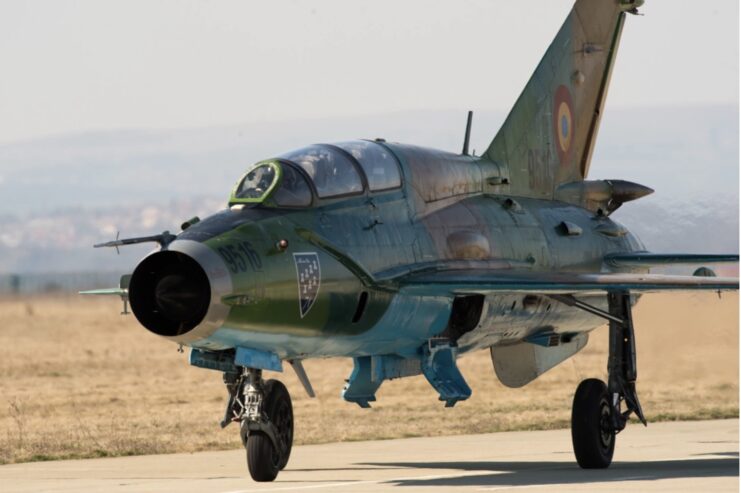
Along with the ability to carry more capable avionic and weapons, the MiG-23 was built to improve upon the performance and range of the Mikoyan-Gurevich MiG-21. The latter was a fast and agile fighter, but had limited operational capabilities due to its primitive radar, short range and limited weapons load.
For the MiG-23, the Soviet Air Force focused on improving the landing and take off, thereby reducing the take-off run distance. The military branch also required the low-level speed and handling be improved over the MiG-21. Maneuverability was not seen as a priority in the new design.
The MiG-23 featured a unique design
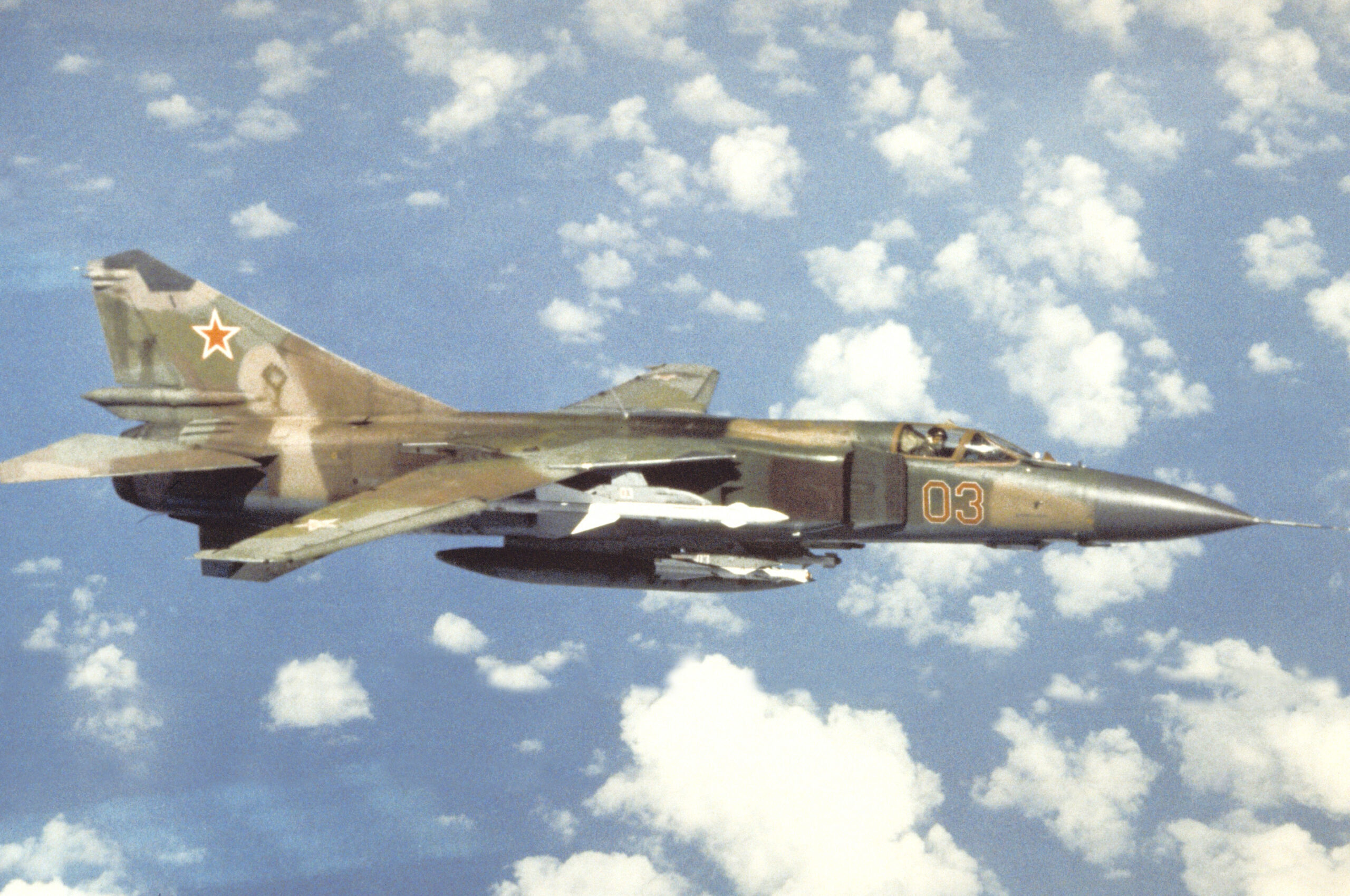
The MiG-23 had many features that made it unique. Firstly, the cockpit was designed to be an improvement in ergonomics over previous Soviet fighters. However, this meant the visibility from the cockpit was somewhat poor, especially the rear view. The newly designed KM-1 ejection seat wrapped around the head of the pilot, meaning they had to lean forward to see behind them. To help solve this issue, a periscope was added to the cockpit that could show the rear, although it had a small field of vision.
As well, the MiG-23 was the first Soviet aircraft to be built with variable-geometry wing-hydraulics, which were controlled by a small lever under the throttle in the cockpit. This allowed the wings to move into three different sweep angles:
- Sixteen degrees, used when taking off, landing or cruising below Mach 0.7.
- Forty-five degrees angle for basic fighter maneuvering, making low-altitude intercepts and cruising at high speeds.
- Seventy-two degrees for high-altitude intercepts and high-speed dashes at low altitudes.
To shorten takeoff and landing performance, the wings had trailing edge flaps and leading edge slats. However, selecting the right position could be tricky for newer aviators. There was only a gauge in the cockpit to show the position of the wings and the Mach limit for each angle, with no indicator to show the best wing position for certain flight conditions.
Redesigning the MiG-23 to improve performance
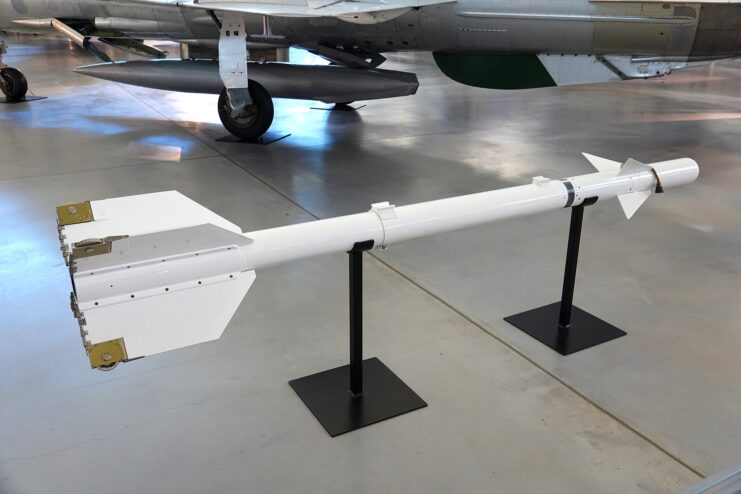
The MiG-23S, the initial production variant, had a S-21 fire control system, similar to the previous MiG-21S/SM models. It could only carry four R-3/K-13 air-to-air missiles and a Gryazev-Shipunov GSh-23L autocannon.
In terms of fuel, the initial prototype carried three tanks in the fuselage, with another three integral tanks under each wing. Early models had issues with the No. 2 fuel tank in the fuselage, which would develop hairline fractures because it was part of the structure and not contained within a fuel bladder. Strict g-force limits had to be imposed until the problem was solved because the structural fractures would cause fuel to seep out.
In the redesign, a fourth fuel tank was added to the rear of the fuselage, improving the MiG-23’s endurance. If traveling at a speed of 265 MPH, it could last an hour – although, if using an afterburner, that time would be reduced to under 45 minutes.
Issues with the engine
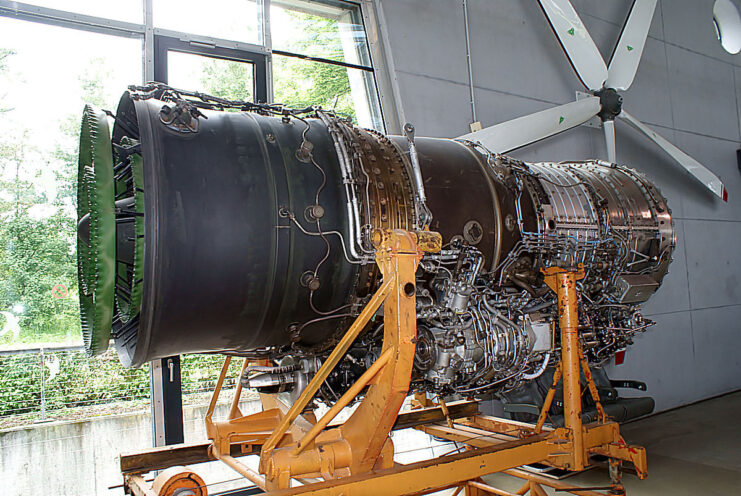
Originally, the MiG-23 had a 27,500-pound thrust Tumansky R-29-300 engine, which had a fast acceleration, taking three to four seconds to go from idle to full power. However, the engine would smoke and the outer casing ran hot, triggering false fire alarms. Furthermore, it only lasted around 150 hours before needing to be replaced. This was a tactic the Soviets used to generate income from export customers.
Another problem with the engines was that they were weak points and not stressed for high yaw maneuver loads. If the aircraft entered a spin, the engine shaft could bend, breaking off turbine blades and destroying the engine. Luckily, these design issues were addressed with the introduction of the R-29B-300 engine in the MiG-23M variant.
Redesigned in 1971 to solve issues
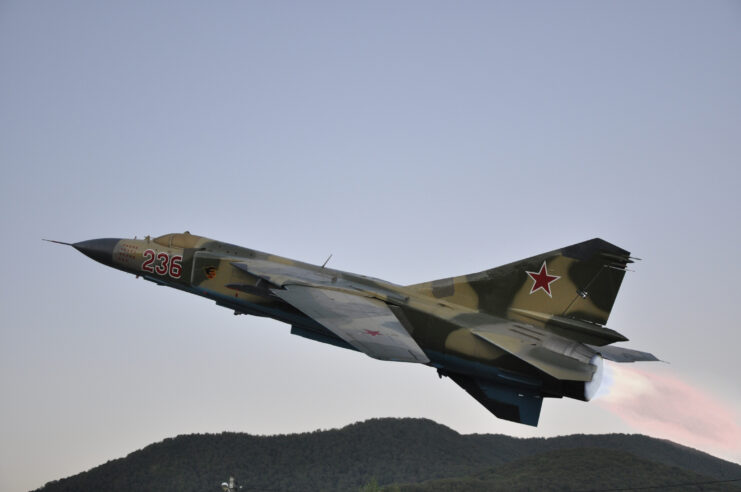
For the redesign that debuted in 1971, the surface of the wings was increased by 20 percent, slightly adjusting the three wing position angles. Dogtooth extensions were added, but the leading-edge slats were removed. This was a mistake, as it not only made takeoff and landing more difficult, but also worsened stability issues.
The MiG-23M was the most produced variant of the fighter. As the definitive first-edition, it was upgraded to be able to carry a pair of R-23 and four R-60 missiles. It could carry up to 3,000 kg in bombs and rockets, and could fire the Kh-23/23M air-to-surface missiles. All units operated by the Soviet Air Force could also carry a single nuclear bomb under the fuselage.
The final variant was the MiG-23MLD. It had a SUV-2ML weapons system introduced in the previous model. It could also hold R-24R/T missiles, in addition to two B8M1 20-round rocket pods firing S-8 rockets, Kh-23/23M air-to-surface missiles, one RN-24 or 40 nuclear bombs. It could also carry up to 2,000 kg of bombs.
Additionally, the wings were also upgraded, bringing back the leading edge slats to fix the issues with the 1971 version
Not as maneuverable as American fighter jets
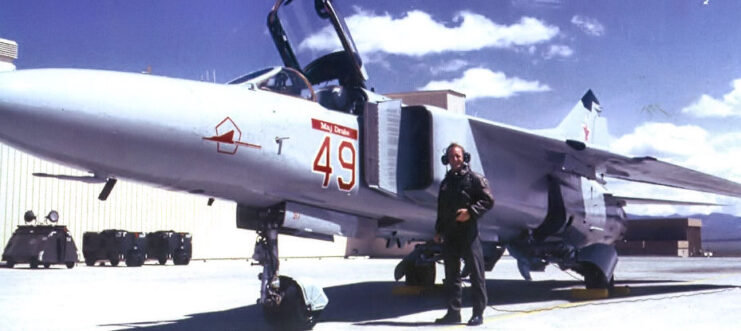
In the summer of 1977, the United States tested the performance of the MiG-23. The fighter was evaluated in two exploitation programs, codenamed “HAVE PAD” and “HAVE BOXER.”
The US Air Force assumed the aircraft could turn well and had typical acceleration. However, during testing, it was revealed that newer American dogfighters, like the McDonnell Douglas F-15 Eagle, could easily out-turn it. As well, the MiG-23 was found to have immense acceleration capabilities that could easily out-run any American fighter.
With it’s small profile, HAVE PAD determined the MiG-23 would be a good interceptor, capable of hit and run attacks, even if it was a poor dogfighter.
The MiG-23 was also flown as part of Project Constant Peg by the 4477 Test and Evaluation Squadron. Running between 1977-88, the project was created to train Air Force, Navy and Marine Corps pilots and weapon systems officers on air combat. It revitalized the art of dogfighting, and the knowledge from the tests contributed to the success of American air operations in Vietnam. It also contributed to the founding of the Air Force’s Exercise Red Flag and the US Navy’s TOPGUN School.
The MiG-23 is still flown by 10 air forces
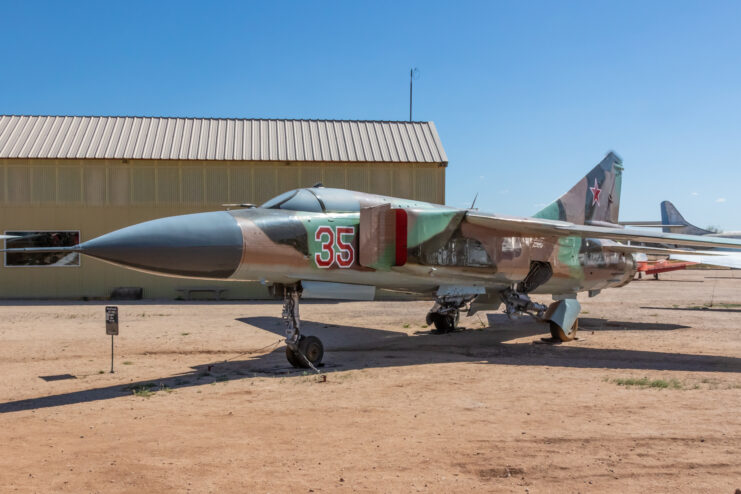
As of 2024, 10 countries have the MiG-23 listed as an active combat aircraft. According to the World Air Forces Directory, Congo has one; Kazakhstan, Libya, Sudan and Zimbabwe have three; Ethiopia has nine; Angola has 22; Cuba has 24; North Korea has 56; and Syria has 87.
More from us: Sukhoi Su-30: The Russian Air Superiority Fighter That Rivals the American F-15E Strike Eagle
There are currently five civilian-owned MiG-23s registered in the United States. On August 13, 2023, a former Bulgarian unit was destroyed while performing at the Thunder Over Michigan Airshow at Willow Run Airport. Previously on display at the Cold War Air Museum near Dallas, the aircraft narrowly missed an apartment building and the pilot sustained minor injuries while trying to land due to engine problems.
The post Mikoyan-Gurevich MiG-23: The Most-Produced Variable-Sweep Wing Aircraft in History appeared first on warhistoryonline.
Mikoyan-Gurevich MiG-23: The Most-Produced Variable-Sweep Wing Aircraft in History
Philippines Truth
Post a Comment
0 Comments